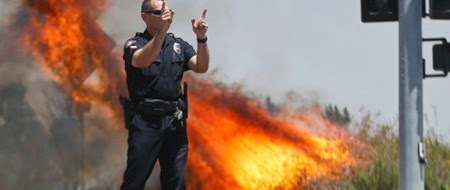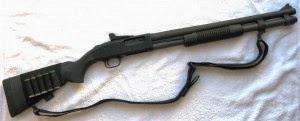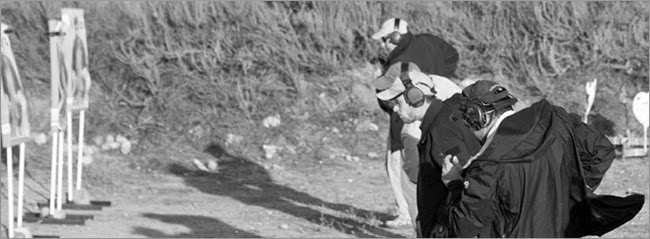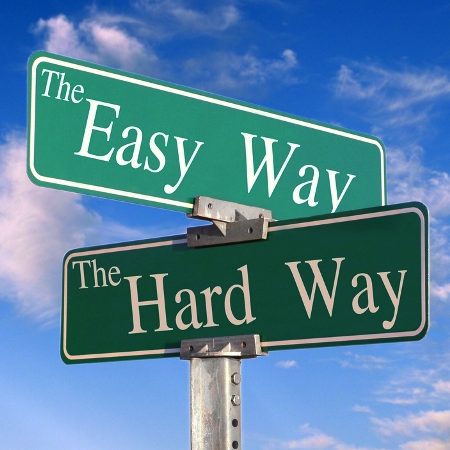“Painless” Physics
Newton’s Second Law: “When a body is acted upon by a constant force, the resulting acceleration is inversely proportional to the mass of the body and is directly proportional to the applied force.” Applicability: Force = Mass X Acceleration. For this discussion of ballistics, the projectile’s mass is constant, so force and acceleration are directly proportional. Therefore, a change in acceleration results in an equal change in force.
Why is this important to ballistics? All three laws act together to describe the interaction of forces that affect a projectile’s flight to target. At the moment the primer ignites the propellant and rapid gas expansion thrusts the projectile forward, the projectile experiences dramatic acceleration. The third law describes how the force required to propel the mass results in an equal and opposite force we know as felt recoil. The very moment the projectile leaves the barrel, friction from air resistance combines with gravity to simultaneously decelerate the projectile and alter its path in a modified parabolic arc (trajectory) toward the earth. As the projectile impacts the target, it decelerates from its residual terminal velocity to zero with an energy transfer that is equal to one-half of the projectile mass multiplied by velocity squared to produce a ballistic effect (third law). But there is more…
Projectile Nomenclature
Projectile design significantly affects performance from ignition, travel through the bore, trajectory, and target impact. While there are many variables, I will briefly describe the characteristics common to most.Meplat/Tip: If the tip of the projectile is flat, the flat surface is called a Meplat. Otherwise, it is called the tip, nose or point. This leading edge affects the amount of drag (air resistance).
Ogive: This is the gradual radial reduction from the shoulder to the meplat or tip.
Shoulder: This is the transition point from the bearing surface to the Ogive.
Bearing Surface: This is the somewhat longer surface area along the length of the projectile that presses against the inside of the bore. The outside diameter of the bearing surface equals the caliber of the projectile.
Cannelure: As mentioned in Internal Ballistics Part III, the projectile is secured within the case by friction as the result of a process called crimping. Some rifle and pistol projectiles have a cannelure somewhere along the bearing surface. The cannelure is a set of tooling marks or series of indentations designed to better secure the crimp and prevent projectile set-back.
Heel/Base: Ranging from flat base through boattail (tapered), the shape greatly affects the amount of drag exerted on the projectile during its flight. Base drag is caused by the partial vacuum that occurs behind the projectile during its flight. A tapered, or boattail base reduces this drag. However, studies indicate that the benefits of a boattail are negligible under 200 yards. Therefore, handgun cartridges and short-range rifle cartridges do not benefit from a boattail projectile.
Transitional Ballistics:
projectile’s travel down the bore, the rotational acceleration is controlled solely by friction applied by the rifling. As the projectile exits the muzzle, its rotational momentum will cause it to continue to rotate in the same direction as it moves under forward momentum. Keep in mind, however, that the bore axis of a firearm is tilted slightly upward in relation to the line of sight. Therefore, although the firearm appears level, the projectile exits the bore at a slight upward angle. The very moment the projectile is free of the bore, atmospheric resistance exerts pressure simultaneously against the nose and under the ogive of the projectile at the same time. These pressures combined with any imperfections in the barrel crown cause the projectile to yaw away from its center axis. Concurrently, air resistance across the full surface area of the rotating projectile exerts an angular force at 90 degrees in relation to the direction of rotation and the orientation of the longitudinal axis, which is precession. At the same time, the projectile’s release from controlled rotation in the rifling to “free flight” outside of the bore requires a short time for the rotational inertia to stabilize along the longitudinal axis. In this process, the nose of the projectile varies in a helical motion until it is dampened to stabilized ballistic flight, which is nutation.
The bottom line is there are a lot of forces that simultaneously act on a projectile the moment it leaves the barrel and it takes a short time for the projectile to stabilize into predictable ballistic flight. Now that we’ve covered these details, we are set up to discuss how gravity, ballistic coefficient, wind and other atmospheric effects alter a projectile’s flight to target. Check back with us to continue the discussion with External Ballistics Part II.
Until then, stay safe and shoot straight!
First Published at Aegis Academy
About Author
-Howard Hall
Howard has served for nearly 20 years in the Marine Corps. He has served as a Platoon Commander, Company Commander, Battalion Executive Officer, Regimental Operations Officer, and Battalion Commander. He has multiple combat tours to include serving as a military transition team member in Fallujah. He is an NRA Certified handgun instructor and holds numerous Marine Corps training credentials. An active competitor in action pistol (United States Practical Shooting Association), long range rifle (NRA F-Class), and shotgun (Amateur Trapshooting Association, National Skeet Shooting Association), howard has earned numerous accolades and medaled during DoD competitions with the 1911 platform in bulls-eye shooting.










